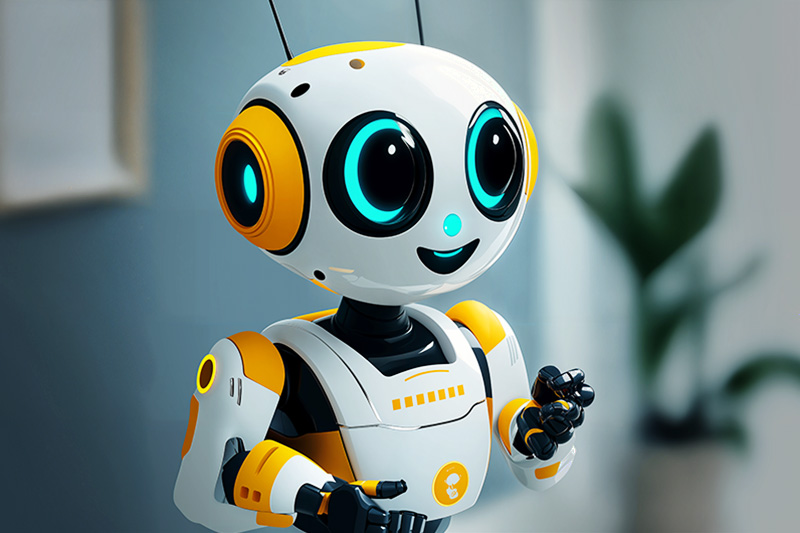The State of Digital Design in Early 2025
This article is going to be a critical one. Or perhaps just a realistic one. We are going to have an in-depth look at the current state of digital design and its future. And the content might surprise you.
Now, a disclaimer first. I know a lot of young designers just sit in their little production scrum team, creating mockups in Figma for the next few sprints. And after having done that for a couple of years they start calling themselves ‘Senior’, because, you know, they have the experience. If you are one of those, and you are happy living in that little scrum bubble and believe you are well on your way to a good career in design, I strongly suggest you stop reading right here. The last thing I want to do is burst those happy little bubbles!
But, if you are a designer that feels something is off, something is missing, if you expected your career to be a bit different than doing late stage prep for development, and you can’t put the finger on why… then this might be the article for you.
The Digital World as it is Today
This is important! Very important! Because ‘digital’ has created its own set of rules. And it has made working in digital as a designer a whole new ballgame compared to any other design field! So, let’s get this into perspective first.
Digital is not about the user! Period!
Let me repeat that, as it is important: Digital is not about the user!
It should be, but at the moment, early 2025, it most definitely is not.
The Early Days of Personal Computing
And this situation has been crafted very, very carefully by the digital world. Back in the early 1980s, when the first mass-produced personal computers were released to the general public, one of the first catchphrases that was introduced was ‘you have to be computer savvy’. Meaning, that it was up to you to figure out how to operate these command line controlled mystery boxes and anything that went wrong was met with a snappy ‘syntax error or unknown command’.

Of course, there was a section of the public who enjoyed this. Yours truly among them. We loved playing around with these tools, and my oh my, were we proud when we coded our first Mandelbrot fractal in 4 color CGA. Good times indeed.
It was accompanied by a campaign of fear mongering: this was the future, there was no going back, join the herd now or be left behind forever, etc. etc.
(If this reminds you of the very same nonsense that is going on at the moment with AI, it’s because it is the same nonsense, but more on that later)
The general public, or most people who were essentially forced these command line operated boxes down their throats at work, in society, and even at home, didn’t give a hoot about technology and just wanted to live their lives in peace.
This led to a rather perculiar social shift. People became quite self concious when it came to computers. They blamed themselves for not being ‘computer savvy’. It was not that applications were just bad, no, it had to be them, because, well, tech is good, right? After all, how could something called ‘an advance’ be bad?
How weird that shift actually was becomes clear if you try to think of any other industry that tries to do this. When you visit a hotel, do you need to be ‘hotel savvy’ or is there staff around, who expects that you are not, and are there to serve you. And if that staff is not there or does a poor job of it, do you visit that hotel again? And you could portray this image on any other industry!
Boldly moving forward…
But big tech jumped right on it, taking advantage to the fullest.
As designers, one of the first things you learn, is that good design means staying as close as possible to the intented user’s mental model. That will make the product you are giving them, easy to use.
Yet, in digital, exactly the opposite happened (and is still happening).
One example is, of course, all that ‘cloud’ nonsense.
“Trust us with your sensitive data and we will store it for you in the cloud!!!”

Do you really think one single bit of data is stored in a ‘cloud’? Don’t you think birds would have a serious issue with that, let alone your average airplane?
Instead: “Trust us with your sensitive data and we will store it for you on our harddrives”, would be perfectly ok to say, but would people be so gullible as to comply? By creating this abstraction between mental and technical models, the big IT companies appeal to some of the strongest human emotions: fear, greed, and ignorance.
Managers and decision makers, with not enough knowledge of the topic, are of course not only afraid to admit they don’t know, but once the train gets rolling, they become afraid of missing out, and they jump on any bandwagon they see passing by.
Rinse and Repeat…
Why change a strategy if it is succesful? Today we see the same scenario being played out with Artificial Intelligence.
The very same scenario… you need to be AI savvy or fear for your job! If things go wrong, it’s not the AI, no, it’s your lack of skill in ‘prompting’. You need to be ‘part of the AI revolution’ or you will cease to exist, become obsolete, a dinosaur ready for extinction.
And managers and decision makers shiver in their boots, fear of missing out reigns strong. Anyway, you get the picture.
The Curse of the Subscription Model
Twenty odd years ago, you bought a piece of software in a box. Two years later, that software had been further developed and ‘improved’ with new features. A few more years later, these ‘improvements’ were used as a justification to change the file-format for that application. From there on, you were ‘left behind’, because backward compatibility was close to non-existent, and you were kinda forced to buy the new package.
In comes the ‘subscription model’. You pay a monthly fee and we make sure you always have the latest version. Win-win. Right?

Well, yeah, maybe 20 years ago, but today?
One of the latest additions to Microsoft Excel? Automatic Image Cropping. Hurray, I am sure that was high on the priority list of the vast majority of users of Excel.
Now, don’t get me wrong. Don’t blame Microsoft for this! It’s not their fault! They have a profitable business model and why would they change that?
Blame the general public and companies, who without thinking accept this from big tech. On average, about 7% of functionality in Microsoft Office is used by a large enough number of users, to justify inclusion in a subscription model.
Yet, when you join a new company, without even thinking about it, you will get a subscription version of MS Office on your laptop. And they happily pay the monthly fee.
Let’s say that same company hires a new building and that building has 100 rooms, but the company only uses 7 of them. How long will they pay for 100 rooms? How long will it take for that company to go talk to the real estate owner and discuss a fitting contract for those 7 rooms?
But not in digital, right? Nope. Normal logic goes out the window when digital gets involved.
So, where does this leave design?
And here we are, UX Designers, Service Designers, all of us, coming in and trying to advocate that the user matters… And they should… But they don’t.
Or do you really think users benefit from more than 93% noise in apps? How often have you used ‘automatic image cropping’ by now? Did you do a little victory dance when Microsoft finally introduced this feature in Excel? Did you even notice it was there, or did Microsoft such a good job of ‘decluttering your UI’ that this brilliant new feature was hidden deep in the basement where that 93% is stored?
A few months ago Adobe decided to ‘improve my UX’ in Adobe Acrobat. Was any new functionality introduced? Of course not. All they did was move functionality, that had been in same place for over 20 years, to somewhere else on the screen. This had me swearing and cursing Adobe while I was desperately looking for how to change page viewing and other basic stuff.
Really? This was supposed to improve my UX? Or was it just another way of justifying your subscription model by spitting out something ‘new’, with complete disregard of the user?
Do you really think these companies take any notice of what any decent designer has to say? All there is to do, is putting together the mockups ready for development. Anything else is just for show.
But hang on… there is digital in other than big tech?
Yes, and this is where opportunities arise. But it is not easy at all. Why?
Well, let’s say a retail company, a manufacturor, an insurance company, or equivalent, decides it needs to go through a digital transformation.
Management is smart enough to understand they lack the specific skills internally. After all, they are masters in selling toothpaste, tampons, or insurances and none are better in that then them, but for digital, well, you need to be really, really savvy!
They start hiring expertise from outside. And who do they hire? They steal away some of the smart folk with a nice history in IT. The very same people who bring in a culture of those subscription driven feature factories being a good thing.
And we see this happening all the time. Lots of digital transitions hopelessly fail due to one simple reason: lack of user adoption. Because employees don’t need apps adding to their workload where 90% of features offered is noise. Because they don’t want functionality cooked up within a feature factory shoved down their throats.
What is needed is that these hired experts go through a culture change. If an organisation simply tries one transition after the other, without realizing their approsch must be more user (employee/customer) centric, they will just end up with the same end result… lack of user adoption and low customer satisfaction.
It is here where seasoned designers can play their part. They can help install processes and ways of both working and thinking that are indeed human centric.
It is also here where currently, companies find it very difficult to hire the right designers. They look for a ‘Senior Designer with 5 years’ experience’. Cool. But if 295 out of the 300 applications are from designers who spent those years sitting in a scrum team preparing mockups for the next sprint or two, well, hrrmm… nope, not what we want. And those 5 that might be a good fit, get completely lost in the process, driven by a silicon monster that looks for buzzwords in resumes.
This is why companies no longer rely on designers to do design! More and more we see a shift towards product management trying to take on this role. User interviews, or design commitees, lead by Product Owners or Product Managers, who enter these ‘workshops’ with an agenda provided by stakeholders and end up frustrated as in: ‘Argh, our users don’t understand what we talk about and they don’t provide us with the right feedback! You know what, let’s just skip that!’
After all, UX Research & Service Design (to name just two) are skillsets that don’t come easy. Just taking that role on as a sidekick, its risky at best and probably self-destructive in many cases.
Wow! This all sounds awful!
That’s because it is really awful. It actually is really, really complex and there are no easy solutions.
On the one hand, if you are a well experienced designer, who truly knows how to translate non-tangible design benefits into hard (financial) numbers, there are some great opportunities out there.
For me, if I need to hire a Senior Designer, and that designer does not know how to put together a full-blown business case, they probably won’t make the cut.
On the other hand, how much ‘fighting windmills’ are you willing to do?

Many a young designer by now has heard from me: “Are you sure you want to work in the digital world?” And even if the answer is yes, I always advice them to look into at least one alternative field of design.
For instance, urban landscaping. Why? Because in todays environmental world, the general public is starting to accept that we need cities that include more than just concrete blocks and steel. The general public realizes a change is needed and this will have to come through better design. You’re not fighting windmills…
It will take a similar shift in thinking by the general public for things to change in digital. The acceptance of all the bad experiences people have with software, interfaces, bots, and other digital crap products needs to be reversed. The realization it is not your lack of skills or you not being savvy enough to work with that product, but it is just a bad product! And that will not happen overnight, if it happens at all.
Final Words
Told ya, this one was going to be critical. And I am sure lots of IT people disagree. Although many deep down will know there is substance to what was said above. It is just that it seems impossible to change, and why bother to bother?
Do you have a future as a Digital Designer?
That depends! I am convinced the UI mockup preparing scrum designer will fade quickly as AI capabilities improve. On a sidenote, I am not convinced this will lead to better UIs, as it simply seems the next step in the shitification process described above.
There is also the interesting development where more and more customer interaction will not happen with the company directly. With the coming of better personal AI assistants and agents, the odds are that the customer interacts with their PA, which then interacts with other silicon entities to come to a good deal.

Having said that, there always will be human-computer interaction in some shape or form. And if we leave that to the techies, with all due respect, having your PA tell you ‘an error occurred at HexAAABBB’ will probably lead to that PA being killed off.
So, there is a need for good digital designers in the foreseeable future. But it probably is a long way away from what they teach you in school, or these so called UX Academies, Courses, and Bootcamps, where they still tell you the same stuff that has been failing for the past decade or two.
Focus on stakeholder management, design process improvements that include KPI/OKR settings, detailed and motivated business cases, and more of that good stuff. It might seem way off track for you right now, but you will be surprised how many companies are looking for these skills in their design leaders.
And yes, at the same time, you will have to bring some top-notch interface design skills as well. After all, the interaction with the eventual user remains one of our top responsibilities.
Think about the above deeply and project it on your personal situation and own ideas and expectations for your development as a designer. There is no single blanket that covers all, so use the little grey cells.
Until next time…


